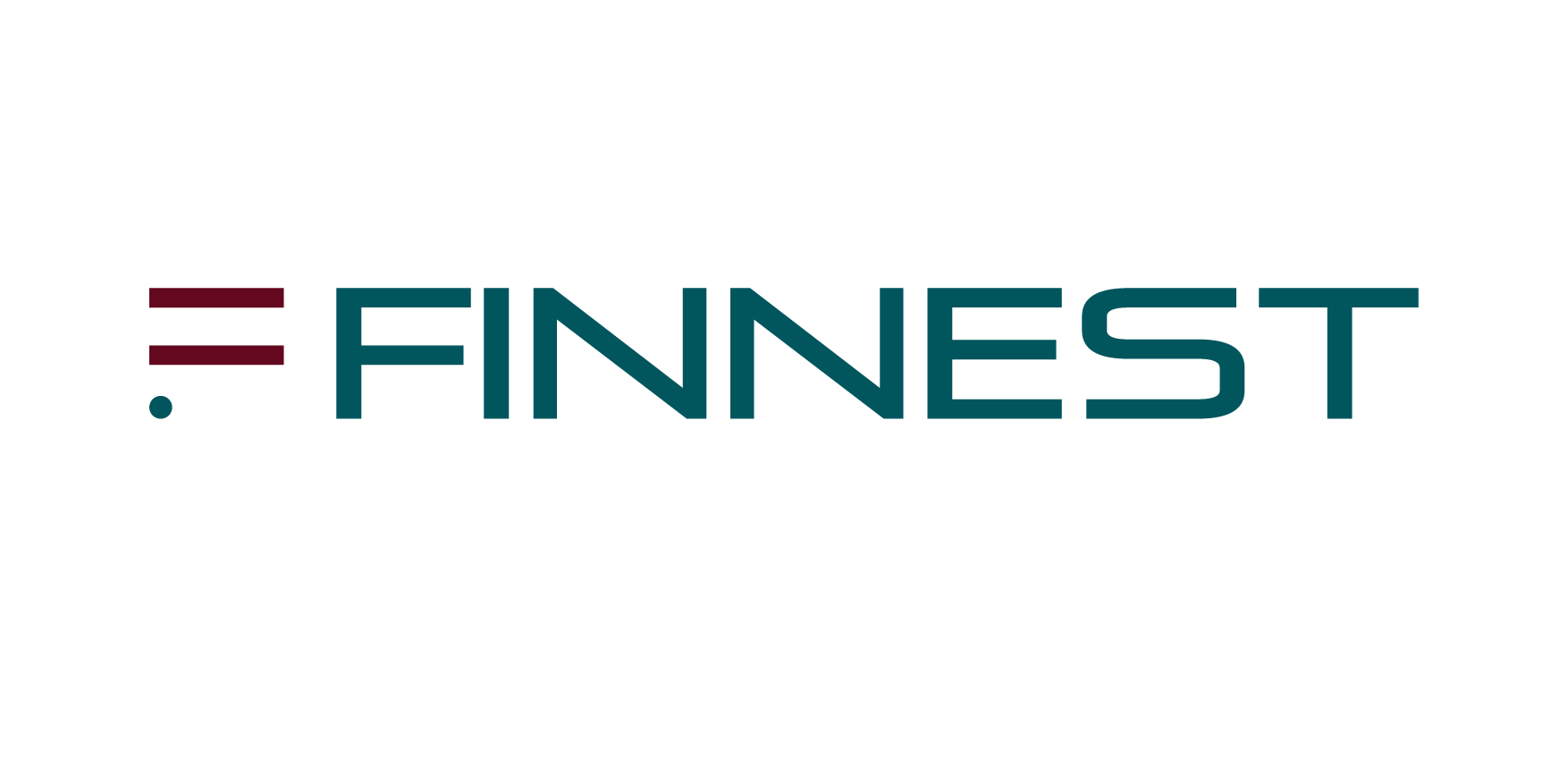Introduction
Studying abroad opens doors to world-class education, global career opportunities, and cultural experiences. However, financing an international education can be a significant challenge, especially when traditional banks and financial institutions require students to pledge collateral (such as property, fixed deposits, or other assets) to secure a loan.
Many students and families do not have assets to pledge or prefer not to risk their property. Fortunately, several banks, NBFCs (Non-Banking Financial Companies), and international lenders now offer study abroad loans without collateral, making it easier for students to pursue their dream education without financial stress.
Understanding Collateral vs. Non-Collateral Education Loans
Before applying for a study abroad loan, it’s important to understand the difference between collateral-based and non-collateral loans. Each type of loan has its own benefits and limitations, and choosing the right one depends on your financial situation, eligibility, and study plans.
A. What is a Collateral-Based Education Loan?
A collateral-based education loan requires students (or their co-applicants) to pledge an asset as security. This collateral assures the lender that the loan amount can be recovered if the borrower is unable to repay it.
Types of Acceptable Collateral:
Immovable Assets – Residential property, commercial property, land, etc.
Fixed Deposits (FDs) – FD receipts from banks with lien marking.
Government Bonds – Recognized investments with financial institutions.
Insurance Policies – Policies with a surrender value that meets loan criteria.
Pros & Cons of Collateral Loans:
| Pros | Cons |
| Lower interest rates (8%–10%) | Requires pledged assets (property, FDs, etc.) |
| Higher loan amounts available | Lengthy documentation and approval process |
| More flexible repayment terms | Risk of losing collateral if repayment fails |
Best For: Students with pledged assets who want lower interest rates and longer repayment periods.
B. What is a Non-Collateral Education Loan?
A non-collateral education loan is an unsecured loan where students do not have to pledge any property or assets. Instead, the loan is approved based on factors like:
University Ranking – Loans are easier to secure for top universities globally.
Course Selection – STEM, management, and professional courses have higher approval rates.
Student’s Academic Record – Strong academic performance can improve eligibility.
Co-applicant’s Financial Stability – A parent or guardian with a stable income is preferred.
Pros & Cons of Non-Collateral Loans:
| Pros | Cons |
| No need to pledge any assets | Higher interest rates (10%–14%) than collateral loans |
| Faster approval process | Requires a financially strong co-applicant |
| Suitable for students without property | Limited loan amount (usually ₹40L–₹50L max) |
Best For: Students without assets who need quick loan approval and are applying to reputed universities.
C. Key Differences Between Collateral & Non-Collateral Loans
| Factor | Collateral-Based Loan | Non-Collateral Loan |
| Collateral Requirement | Mandatory (Property, FD, etc.) | Not Required |
| Interest Rates | 8%–10% | 10%–14% |
| Approval Time | Slower due to valuation process | Faster (2–4 weeks) |
| Loan Amount | Higher loan amounts available | Limited (₹40L–₹50L max) |
| Preferred Universities | Open to all universities | Mostly high-ranking universities |
| Co-Applicant Requirement | May not always be needed | Required for most loans |
Final Takeaway: If you have a financially strong co-applicant and are applying to a top-ranked university, a non-collateral loan could be a good option. If you need lower interest rates and a higher loan amount, a collateral loan might be the better choice.
Top Banks & NBFCs Offering Non-Collateral Education Loans
Several banks, Non-Banking Financial Companies (NBFCs), and international lenders provide education loans without collateral to students pursuing higher education abroad. These loans are typically approved based on the student’s academic profile, university ranking, course selection, and co-applicant financial stability.
Below, we compare the best lenders for non-collateral study abroad loans, including interest rates, loan amounts, and repayment terms.
A. Comparison of Top Lenders for Non-Collateral Loans
| Lender | Loan Amount | Interest Rate | Repayment Period | Processing Time | Special Features |
| HDFC Credila | ₹5L – ₹50L | 10% – 12% | Up to 15 years | Fast Approval | Tailored loan structure |
| Axis Bank | ₹5L – ₹40L | 11% – 13% | Up to 12 years | Moderate | No collateral up to ₹20L |
| ICICI Bank | ₹7L – ₹50L | 10.5% – 12.5% | Up to 15 years | Fast Approval | Quick processing |
| Avanse Financials | ₹4L – ₹50L | 11% – 14% | Up to 15 years | Quick Process | 100% financing available |
| InCred | ₹5L – ₹50L | 11% – 14% | Up to 15 years | Moderate | Customizable EMI options |
| Prodigy Finance | Up to $100,000 (INR Equivalent) | 9% – 13% (USD) | Up to 10 years | 2 Weeks | No co-applicant required |
| MPOWER Financing | Up to $100,000 | 10% – 14% (USD) | Up to 10 years | 2 Weeks | No collateral or co-signer needed |
Tip: While NBFCs and private lenders offer faster approvals, they may charge higher interest rates than public banks. Compare lenders to find the best option for your needs.
B. Public Banks Offering Non-Collateral Education Loans
Public banks like State Bank of India (SBI) and Bank of Baroda (BoB) also offer non-collateral loans, but only for students applying to specific high-ranking universities.
✅ SBI Global Ed-Vantage Loan – Non-collateral loans up to ₹7.5L for select institutions.
✅ Bank of Baroda Education Loan – Up to ₹40L without collateral for top-tier universities.
✅ Punjab National Bank (PNB Udaan) – Non-collateral loans up to ₹15L for government-listed institutions.
💡 Tip: Public banks have lower interest rates (8.5% – 10%) but stricter eligibility criteria, especially for non-collateral loans.
C. International Lenders for Study Abroad Loans Without Collateral
For students studying in the USA, UK, Canada, or Europe, international lenders provide non-collateral loans with dollar-denominated interest rates.
Prodigy Finance: Best for STEM & business courses in top universities; no co-applicant required.
MPOWER Financing: Available for students in USA & Canada; no collateral or co-signer needed.
Lendwise (UK): Specializes in low-interest study abroad loans for master’s degrees in Europe.
Tip: International lenders are a great option if Indian banks reject your loan application due to university rankings or lack of a co-applicant.
D. Things to Consider When Choosing a Non-Collateral Loan
Before finalizing a lender, compare the following factors:
✔ Interest Rates & Hidden Fees: Look for processing fees, forex conversion charges, and penalties.
✔ Repayment Terms: Some lenders allow repayments after graduation, while others require EMIs during the study period.
✔ Loan Processing Time: NBFCs and international lenders usually process loans faster than public banks.
✔ Prepayment Flexibility: Check if early repayment options are available without penalties.
Pro Tip: Always compare multiple lenders and negotiate for lower interest rates where possible.
Eligibility Criteria for Non-Collateral Education Loans
Non-collateral education loans offer flexibility for students without assets, but not everyone qualifies. Banks and NBFCs carefully evaluate a student’s academic profile, chosen university, course, and co-applicant’s financial status before approving a loan. Below are the key eligibility criteria and factors that affect loan approval.
A. Key Factors Affecting Loan Eligibility
Lenders assess several factors before approving a study abroad loan without collateral:
University Ranking – Loans are more easily approved for students admitted to top-ranked global universities.
Course Selection – STEM, business, and professional courses have higher approval chances.
Academic Record – Strong performance in 10th, 12th, and undergraduate studies improves credibility.
Co-Applicant’s Financial Stability – Lenders prefer a parent/guardian with a steady income and good credit score.
Country of Study – Countries like the USA, UK, Canada, Germany, and Australia are preferred by lenders.
Tip: If you’re applying for a non-STEM or arts/humanities course, securing a scholarship or financial aid can strengthen your loan application.
B. Detailed Eligibility Criteria of Major Lenders
| Lender | Minimum University Ranking | Course Preferences | Co-Applicant Required? | Age Criteria |
| HDFC Credila | Top 500 globally | STEM, Business, Management | Yes | 18 – 35 years |
| Axis Bank | Top 200 universities | All courses | Yes | 18 – 35 years |
| ICICI Bank | Top 300 globally | STEM, Healthcare, Law | Yes | 18 – 35 years |
| Avanse Financials | No fixed rank | All disciplines | Yes | 18 – 35 years |
| Prodigy Finance | Top 1000 globally | STEM, Business, Finance | No | 18+ |
| MPOWER Financing | No specific rank | Business, Tech, Law | No | 18+ |
Tip: If your university isn’t in the lender’s preferred list, check NBFCs or international lenders like Prodigy Finance or MPOWER Financing for alternative options.
C. Co-Applicant Requirements for Non-Collateral Loans
Most lenders require a co-applicant (such as a parent, guardian, or spouse) to apply for a non-collateral loan. Their financial stability directly impacts loan approval.
✔ Who Can Be a Co-Applicant?
- Parents (father/mother)
- Siblings
- Spouse
- Legal Guardian
✔ Financial Requirements for Co-Applicants
- Stable income source (Salary slip, ITR, business proof)
- Good credit score (Preferably above 700)
- Minimum annual income as per lender’s policy
❌ If You Don’t Have a Co-Applicant:
- Consider lenders like Prodigy Finance or MPOWER Financing, which don’t require co-signers.
- Apply for scholarships to reduce loan dependency.
D. Documents Required for Loan Application
To process a non-collateral education loan, lenders require various documents for verification.
Personal & Academic Documents:
✅ Valid passport & ID proof
✅ Admission letter from university (I-20 for US, CAS for UK)
✅ Academic transcripts (10th, 12th, UG degree, GMAT/GRE/IELTS/TOEFL scores)
Co-Applicant’s Financial Documents:
✅ Salary slips (last 3 months) or Income Tax Returns (ITR)
✅ Bank statements (6–12 months)
✅ Business proof (for self-employed co-applicants)
Loan-Specific Documents:
✅ Loan application form
✅ Statement of estimated expenses (tuition, living costs, insurance, travel)
Tip: Having all documents ready speeds up loan approval. Incomplete paperwork is one of the most common reasons for rejection.
How to Apply for a Non-Collateral Education Loan
Applying for a study abroad loan without collateral can be a smooth process if you follow the right steps. Below is a structured guide to help you secure funding efficiently.
A. Step 1: Research & Compare Lenders
Before applying, it’s important to compare multiple lenders based on:
✔ Interest rates – Lower rates help reduce repayment burden.
✔ Loan amount – Ensure it covers tuition, living expenses, and other costs.
✔ Processing time – Some lenders offer quick approvals within 2–3 weeks.
✔ Repayment flexibility – Check if there’s a grace period after graduation.
✔ Hidden charges – Look for processing fees, forex conversion fees, and prepayment penalties.
Tip: Use Finnest’s loan comparison tools to find the best lender for your needs.
B. Step 2: Check Eligibility Before Applying
🔹 Is your university on the lender’s approved list? (Check lender websites for eligible institutions.)
🔹 Does your co-applicant meet financial requirements (if required)?
🔹 Are you applying for a high-demand course (STEM, management, healthcare, etc.)?
❌ If you don’t meet the eligibility criteria:
- Look for alternative lenders like NBFCs or international financing companies.
- Strengthen your profile by securing a partial scholarship or demonstrating strong academic scores.
C. Step 3: Gather Required Documents
Personal & Academic Documents:
✅ Valid passport & proof of identity
✅ Admission letter from university (I-20 for US, CAS for UK)
✅ Academic transcripts (10th, 12th, UG degree, GMAT/GRE/IELTS/TOEFL scores)
Co-Applicant’s Financial Documents (if applicable):
✅ Income proof (salary slips, business proof, ITR returns)
✅ Bank statements (last 6–12 months)
✅ Credit score report
📌 Loan-Specific Documents:
✅ Loan application form
✅ Statement of estimated expenses (tuition fees, living costs, visa, insurance)
💡 Tip: Keep digital copies of all documents for faster online applications.
D. Step 4: Submit the Loan Application
Most banks and NBFCs allow online and offline loan applications.
✔ Online Application Process:
1️⃣ Visit the lender’s website and fill out the application form.
2️⃣ Upload all required documents.
3️⃣ Get a pre-approval decision within a few days.
✔ Offline Application Process:
1️⃣ Visit the lender’s branch.
2️⃣ Submit hard copies of documents.
3️⃣ Wait for loan approval and verification process.
Tip: Online applications are faster, but offline applications may provide better loan negotiation opportunities.
E. Step 5: Loan Approval & Sanction Process
🔹 After submitting the application, banks conduct a financial evaluation.
🔹 If approved, a sanction letter is issued with details of loan amount, interest rate, and repayment terms.
🔹 Some lenders conduct a video verification or personal discussion to finalize approval.
Tip: If your application is rejected, ask for feedback and try alternative lenders.
F. Step 6: Loan Disbursement & Payment Process
Once the loan is sanctioned:
Funds are either directly transferred to the university (for tuition) or to your bank account (for living expenses).
Some lenders allow partial disbursements for each semester.
Tip: If you need a proof of funds statement for your visa application, request it from the lender immediately after loan sanction.
G. Step 7: Repayment & EMI Planning
Most loans offer a grace period (moratorium) where EMIs start 6–12 months after graduation.
Some lenders allow interest-only payments during the study period.
Plan your EMIs based on expected salary post-graduation to avoid repayment difficulties.
Tip: If you secure a scholarship after taking the loan, check with the lender about prepayment options to reduce interest payments.
Pros & Cons of Non-Collateral Education Loans
Taking a study abroad loan without collateral can be a great option for students who do not have assets to pledge or want a faster loan approval process. However, like any financial decision, it comes with both advantages and disadvantages. Understanding these factors can help you determine whether a non-collateral education loan is the right choice for you.
A. Pros of Non-Collateral Education Loans
✅ No Need for Property or Fixed Deposits
- Unlike collateral-based loans, you don’t need to pledge property, savings, or investments as security.
- This makes education loans accessible to more students, especially those without valuable assets.
✅ Faster Loan Approval & Processing
- Since there’s no property evaluation or legal verification, the loan is sanctioned within 2–4 weeks.
- Ideal for students with urgent admission or visa deadlines.
✅ Flexible Repayment Options
- Many lenders offer grace periods (moratorium) where EMIs start after course completion.
- Some NBFCs allow students to pay only interest during the study period to reduce financial burden.
✅ Available for a Wide Range of Courses
- Non-collateral loans favor students from top-ranked universities, but some NBFCs also finance mid-tier universities.
- Lenders generally prefer STEM, business, healthcare, and management programs due to better job prospects.
✅ Ideal for International Education
- International lenders like Prodigy Finance and MPOWER Financing do not require collateral or co-signers.
- Best for students studying in USA, UK, Canada, and Europe.
💡 Tip: If your university is ranked highly and your co-applicant has a stable financial profile, you have high chances of approval for a non-collateral loan.
B. Cons of Non-Collateral Education Loans
❌ Higher Interest Rates
- Non-collateral loans typically have higher interest rates (10% – 14%) compared to collateral loans (8% – 10%).
- Since lenders take on more risk, they charge higher interest to offset potential defaults.
❌ Limited Loan Amounts
- Most banks cap non-collateral loans at ₹40L – ₹50L, which may not cover full expenses for high-tuition universities.
- Some lenders only approve loans for tuition fees, requiring students to fund living expenses separately.
❌ Strict Eligibility Requirements
- Banks prefer students enrolling in globally ranked universities (top 200–500).
- Non-STEM courses and lower-ranked universities may face higher rejection rates.
❌ Co-Applicant Requirement (for most lenders)
- Many Indian banks and NBFCs require a financially strong co-applicant with a good credit score.
- If your co-applicant has a low income or bad credit history, your loan may get rejected.
❌ Hidden Charges & Processing Fees
- Some lenders charge processing fees, forex conversion fees, and prepayment penalties.
- Always read the loan agreement carefully before signing.
💡 Tip: If the interest rate is too high, consider applying for multiple scholarships or choosing a mix of collateral and non-collateral loans to reduce costs.
C. Is a Non-Collateral Loan Right for You?
| Factor | Non-Collateral Loan is Best If… | Consider a Collateral Loan If… |
| Collateral Availability | You don’t have property or assets to pledge. | You have property, fixed deposits, or government bonds to use as security. |
| Interest Rate | You’re comfortable with higher interest (10% – 14%). | You want a lower interest rate (8% – 10%). |
| Loan Amount | You need up to ₹40L – ₹50L. | You need a higher loan amount (₹75L – ₹1.5Cr). |
| Loan Processing Time | You need fast approval (2–4 weeks). | You can wait longer for property verification (1–2 months). |
| University Ranking | Your university is globally ranked or in top lender-approved lists. | Your university is mid-tier or lower-ranked. |
| Co-Applicant Requirement | You have a co-applicant with a stable income. | Your co-applicant’s profile is weak, but you have collateral. |
💡 Final Advice:
- Go for a non-collateral loan if you need quick approval, study at a top-ranked university, and have a strong co-applicant.
- Consider a collateral loan if you have assets to pledge and want lower interest rates with higher loan amounts.
Tips to Improve Loan Approval Chances
Securing a study abroad loan without collateral can be competitive, as banks and NBFCs follow strict approval criteria. However, by taking the right steps, students can increase their chances of approval and secure better loan terms.
Here are the best strategies to strengthen your loan application and maximize your chances of getting approved.
A. Apply to High-Ranked Universities
Lenders prioritize students from top universities as they have higher job placement rates and lower default risks.
✔ Preferred Destinations: USA, UK, Canada, Germany, Australia.
✔ Preferred Courses: STEM, Business, Finance, Healthcare, IT.
✔ Preferred Universities: Ivy League, Russell Group, Group of 8 (Australia), and QS-ranked institutions.
💡 Tip: If your university is not in the lender’s preferred list, consider adding a strong co-applicant or applying to NBFCs instead of banks.
B. Maintain a Strong Academic Profile
Your academic record plays a major role in loan approval. Banks assess past performance to determine whether a student can complete their course successfully and secure a high-paying job.
✔ Maintain a CGPA of 7.5+ or 75%+ in previous studies.
✔ Score well on standardized tests (GRE, GMAT, IELTS, TOEFL).
✔ Highlight research work, projects, and certifications.
💡 Tip: If your scores are below the eligibility criteria, consider retaking tests (GRE, IELTS) to improve them.
C. Strengthen Your Co-Applicant’s Financial Profile
Most Indian lenders require a co-applicant for non-collateral loans. A financially strong co-applicant increases approval chances.
✔ Choose a co-applicant with a stable income (₹5L+ per year).
✔ **Ensure they have a good credit score (700+ recommended).
✔ Provide proof of income (salary slips, ITRs, business proof).
❌ Avoid co-applicants with low income or bad credit, as this may lead to rejection.
💡 Tip: If your co-applicant has a weak financial profile, try applying with an NBFC or international lender like Prodigy Finance, which doesn’t require a co-signer.
D. Secure Partial Scholarships & Financial Aid
Having a scholarship or financial aid reduces your loan burden and improves approval chances.
✔ Apply for merit-based and need-based scholarships.
✔ Highlight any university tuition waivers or assistantships.
✔ Show proof of additional grants or financial aid received.
💡 Tip: Even small scholarships (₹50,000 – ₹2L) improve your profile by reducing the loan amount needed.
E. Reduce Your Loan Amount if Possible
Lenders prefer applicants requesting reasonable loan amounts based on course expenses.
✔ Opt for the lowest loan amount required (considering savings, scholarships, and part-time work).
✔ Include only necessary expenses like tuition, rent, and essentials.
✔ Avoid requesting excessive funds for travel, personal expenses, or luxury items.
💡 Tip: A lower loan amount means faster approval and lower interest payments in the long run.
F. Choose the Right Lender Based on Your Profile
Different lenders have different eligibility criteria and approval processes.
✔ If you have a strong academic & co-applicant profile → Go for public banks (SBI, Bank of Baroda).
✔ If your university is mid-tier or you have a weaker co-applicant → Apply with NBFCs (Avanse, InCred).
✔ If you don’t have a co-applicant → Consider Prodigy Finance or MPOWER Financing.
💡 Tip: Always compare interest rates, processing fees, and repayment flexibility before choosing a lender.
G. Improve Your Creditworthiness Before Applying
✔ Ensure your co-applicant pays EMIs, credit card bills on time to maintain a high credit score.
✔ Clear any existing debts or outstanding loans before applying.
✔ Check the credit report for any errors or disputes and correct them.
💡 Tip: A co-applicant with a high credit score (750+) can help negotiate better loan terms.
H. Apply Early to Avoid Last-Minute Rejections
Many students wait until visa approval or last-minute admission deadlines to apply for a loan, which can lead to delays or rejection.
✔ Start applying at least 3–6 months before the course begins.
✔ Keep all required documents ready to avoid processing delays.
✔ Check processing times—some lenders take 4–6 weeks to approve loans.
💡 Tip: Applying early allows time to negotiate better interest rates and switch lenders if needed.
I. Be Ready for a Personal Discussion (PD) if Required
Some banks conduct a Personal Discussion (PD) to evaluate the student’s ability to repay the loan.
✔ Be prepared to explain why you chose the university and course.
✔ Show proof of expected salary post-graduation.
✔ Demonstrate a well-thought-out financial plan for repayments.
💡 Tip: Treat the PD like a mini-interview and practice responses beforehand.
Conclusion: Secure Your Study Abroad Loan with Finnest
Financing your study abroad journey shouldn’t be a roadblock to your dreams. With the right approach, students can secure non-collateral education loans that provide financial flexibility without the burden of pledging assets. By choosing the right lender, strengthening eligibility, applying early, and leveraging financial aid, students can study at top global universities without financial stress.
At Finnest, we specialize in helping students navigate the complex study abroad financing process by:
✅ Connecting students with the best banks, NBFCs, and international lenders for non-collateral loans.
✅ Offering personalized loan comparison tools to help find the lowest interest rates.
✅ Providing expert guidance on eligibility, document preparation, and application strategies.
✅ Assisting students in securing scholarships and financial aid to minimize loan dependency.
With Finnest, your study abroad financing is in safe hands. Whether you need help choosing a lender, improving your loan application, or understanding repayment options, our expert advisors are here to guide you every step of the way.
Ready to Apply for Your Study Abroad Loan?
🔹 Get in touch with Finnest today and let’s make your dream education a reality!
Frequently Asked Questions (FAQs)
1. Can I get a study abroad loan without collateral if my university is not well-known?
🔹 It depends on the lender. Most banks prioritize high-ranking universities, but some NBFCs may approve loans for mid-tier institutions.
2. What happens if my co-applicant has a low credit score?
🔹 A weak co-applicant profile can impact approval chances. Consider improving the credit score or adding another financial guarantor.
3. Are non-collateral loans available for undergraduate students?
🔹 Yes, but postgraduates have higher approval rates due to better job prospects.
4. Do international lenders like Prodigy Finance require a co-applicant?
🔹 No, Prodigy Finance assesses students based on their earning potential and university ranking instead of co-applicants.
5. Can I take a mix of collateral and non-collateral loans?
🔹 Yes, some students use non-collateral loans for tuition fees and collateral loans for living expenses.




